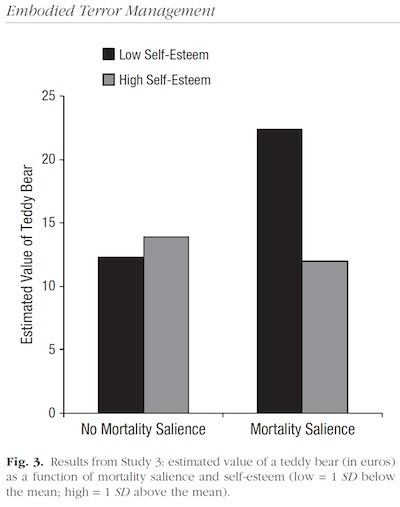Marc Abrahams's Blog, page 451
November 8, 2013
Reversal linguistics in explorations
“
Geoffrey Sampson defends the extraordinary claim that there is no theoretically significant non-quantitative linguistic difference between a sentence of English and a string composed of the same words in the opposite order. Let me put that a different way. Order opposite the in words same the of composed string a and English of sentence a between difference linguistic non-quantitative significant theoretically no is there that claim extraordinary the defends Sampson Geoffrey.”
So writes professor Geoffrey K. Pullum (now Professor of General Linguistics at the University of Edinburgh, Scotland) in Ungrammaticality, Rarity, and Corpus Use Corpus Linguistics and Linguistic Theory, Volume 3, Issue 1, Pages 33–47.
The Geoffrey Sampson, to whom professor Geoffrey Pullum is referring, is now a research fellow at the University of South Africa, previously Professor of Natural Language Computing in the Department of Informatics, University of Sussex, UK.
Divided be might opinions, seems it, thus.

November 7, 2013
The physics of squeezing sheep through a bottleneck
The meeting on Física de sistemas fuera del equilibrio, on November 20, 2012 in Madrid, featured a talk by Iker Zurigel about sheep flowing through a bottleneck, a phenomenon which in some ways is like ketchup flowing through a bottleneck, and in some ways is not. Here’s the abstract (thanks to investigator Mason Porter and colleagues for bringing it to our attention):
Flow of sheep through a bottleneck. Effect of the presence of an obstacle
by Iker Zuriguel [pictured here] and Angel Garcimartın, Universidad de Navarra, Pamplona.
There are times when mobs have to pass through a bottleneck, such in the case of an emergency exit. If panic seizes the crowd, a jamming can obstruct the way out. This phenomenon displays many features that are also observed with inert particles (e.g. sand, cereal) when they choke the exit of a silo or clog pipe. Recent research has lead to the discovery that an obstacle before the exit of a silo relieves the pressure near the orifice and the jamming probability decreases. Although there are some works that suggest that this method is also valid to reduce the likelihood of clogging for live beings, it is a matter of fact that the procedure has not been definitively proved. In this talk, recent experimental results of the flow of sheep through bottlenecks will be presented and compared with already existent computer simulations. In addition an analogy with the case of silo clogging will be introduced revealing the strong connection between these two apparently different scenarios.
November can be a big month for lively science meetings. This November, 2013, will see a much anticipated session (on Sunday the 24th) about Birth-Fluid Dynamics, and the Splashy Hydrodynamics of Urination, at a conference in Pittsburgh.
BONUS (quasi-related): One observer’s recommendation, in a video, that you watch a (different) video about a newfangled way to make ketchup flow:

What’s new is old again: A modest little something in the knee
Lots of excitement there was about a surprising discovery. And then… Paul Raeburn, writing in the Knight Science Journalism Tracker, was one of the people who kicked that discovery in the knee, rendering it limp:
It was startling news, but an easy story to write: Scientists have discovered a new body part! Amazing, isn’t it, that something could have eluded us since the time of Hippocrates?
Well, it would be amazing, except for one little detail, a detail so trivial I’m embarrassed to bring it up: It isn’t true.
But, hey, it’s an unusually warm Thursday in New York, I’m feeling good about life, so let’s give the journalists who bungled this story a break.
Why? Because in order to discover that the story wasn’t true, they would have had to dig down all the way to the very first line of the study’s abstract, which says, “In 1879, the French surgeon Segond described the existence of a ‘pearly, resistant, fibrous band’ at the anterolateral aspect of the human knee…”
That’s the body part in question, as journalists who even glanced at the abstract would have known. The darn thing was discovered 134 years ago.…

November 6, 2013
Think, Think Again, About Think, Thinking
 Ponder, if you will, the implications of this study:
Ponder, if you will, the implications of this study:
“Rethinking Rumination,” Susan Nolen-Hoeksema, Blair E. Wisco, and Sonja Lyubomirsky [pictured here], Perspectives on Psychological Science, vol 3, no. 5, 2008, pp. 400-424. The authors are at Yale University and University of California, Riverside.

The importance of calmness in narrating a robot-cow-herder video
This video, prepared by the Dairy Science Group at the University of Sydney, demonstrates (without harping on the fact) the value of maintaining a calm tone when narrating a documentary about using a robot to herd cows:
(HT Frank Swain)
BONUS (somewhat related): The 2013 Ig Nobel Prize-winning study ”Are Cows More Likely to Lie Down the Longer They Stand?” Bert J. Tolkamp, Marie J. Haskell, Fritha M. Langford, David J. Roberts, Colin A. Morgan, Applied Animal Behaviour Science, vol. 124, nos. 1-2, 2010, pp. 1–10.
BONUS (more distantly related): CNET’s report about a Cornell project based on the notion that it’s important to engineer a knife-wielding robot’s motions in some way that keeps humans calm. Here’s video from Cornell:

Panting by Numbers for Super-Scholars
Do you pant with excitement to learn which scholar is the most very smartest and/or most very most influential?
If you do, then try using the Scholarometer. An article in Nature magazine describes the excitement that drives the people who wrote the software that delivers the numbers:
Who is the best scientist of them all?
Is theoretical physicist Ed Witten more influential in his field than the biologist Solomon Snyder is among life scientists? And how do their records of scholarly impact measure up against those of past greats such as Karl Marx among historians and economists, or Sigmund Freud among psychologists?…
[R]esearchers at Indiana University Bloomington think that they have worked out the best way [to calculate rankings across disciplines]….Their provisional (and constantly updated) ranking of nearly 35,000 researchers relies on queries made through Google Scholar to normalize the popular metric known as the h-index (a scientist with an h-index of 20 has published at least 20 papers with at least 20 citations each, so the measure takes into account quantity and popularity of research)….
The [rankings appear] on the website Scholarometer, developed by Filippo Menczer [pictured here], an informatician at Indiana University Bloomington, and his colleagues Jasleen Kaur and Filippo Radicchi.
“We think there is a hunger for this…,” says Menczer.
(Thanks to investigator Hal Vance for bringing this to our attention.)
BONUS (possibly unrelated): Whatever happened to Paint by Numbers?:
BONUS (possibly unrelated): Paint by Numbers in Two Minutes:

Chin Chin Fish Foot Massage Mystery
“A fish pedicure is the process in which the user places their feet in a tank of water (which may be for individual use or shared) to mid-calf level and Garra rufa fish preferentially ‘nibble’ the thickened skin from the feet, usually for between 15 to 30 minutes.”
The definition (and the photo) comes from an August 2011 report from the UK Govt.’s Health Protection Agency (HPA), which evaluated the pros and cons of having one’s feet nibbled. The report found that :
“On the basis of the evidence identified and the consensus view of experts, the risk of infection as a result of a fish pedicure is likely to be very low, but cannot be completely excluded.”
The document provided a caution however :
“Chin Chin fish should not be used as an alternative to Garra rufa.
Chin Chin fish develop teeth as they age and thus the public health risk from these is likely to be greater. It is therefore recommended that they should not be used for this purpose.”
But what, exactly, are ‘Chin Chin’ fish? Despite more than two years of partial endeavour, Improbable has had almost no success in finding a verifiable scientific identification of the species. Some (such as the HPA) imply that the nefarious Chin Chin fish might be a type of carp, whilst other www chatter asserts that it could be a variant of Tilapia.
In the public interest, with fish foot massage safety issues in mind, can any ichthyologists finally resolve the Chin Chin mystery for us?

November 5, 2013
Embodied Terror Management via Teddy Bears (Sin)
Teddy bears are a key element in this study about Embodied Terror Management and self-esteem:
“Embodied Terror Management: Interpersonal Touch Alleviates Existential Concerns Among Individuals With Low Self-Esteem,” Sander L. Koole [pictured here], Mandy Tjew A Sin, Iris K. Schneider, Psychological Science, epub November 3, 2013. (Thanks to investigator Neil Martin for bringing this to our attention.) The authors, at VU University Amsterdam, explain:
“Individuals with low (rather than high) self-esteem often struggle with existential concerns. In the present research, we examined whether these existential concerns may be alleviated by seemingly trivial experiences of both real and simulated interpersonal touch…. Reminding individuals with low self-esteem of death increased their desire for touch, as indicated by higher value estimates of a teddy bear, a toy animal that simulates interpersonal touch (Study 3). Finally, holding a teddy bear (vs. a cardboard box) led individuals with low self-esteem to respond to a death reminder with less defensive ethnocentrism (Study 4).”
Detail from the study:
BONUS (possibly unrelated): The Magnificent 7 perform “The Teddy Bears’ Picnic”:

November 4, 2013
Curiously worded: Vegetable Parenting
Vegetable parenting begins to creep into the scientific literature:
“A Model of Goal Directed Vegetable Parenting Practices,” Melanie Hingle, Alicia Beltran, Teresia O’Connor, Deborah Thompson, Janice Baranowski, Tom Baranowski. Appetite 58 (2), April 2012, pp. 444–449. The authors, at Baylor College of Medicine and at the University of Arizona, write:
“The aim of this study was to explore factors underlying parents’ motivations to use vegetable parenting practices (VPP) using the Model of Goal Directed Vegetable Parenting Practices (MGDVPP)… as the theoretical basis for qualitative interviews…. Parents believed child vegetable consumption was important and associated with child health and vitality.
(Thanks to Paul. N. Tayor for bringing this to our attention.)
BONUS: By the same team and other colleagues: “Exploring determinants of vegetable parenting practices“

Comparing (almost) identical papers – a steganographic exercise
 As those keen on encryption and decryption will know, there are quite a few documented methods by which ‘secret’ messages can be concealed within apparently straightforward-looking chunks of text. Indeed, the original meaning of the word ‘Steganography‘ is simply ‘concealed writing’. For example, two blocks of text which at first glance appear alike can have subtle yet crucial differences, say, in font spacing or vertical letter alignment. When the two blocks are digitally compared, the differences show up, revealing the hidden message (or a code to decipher it).
As those keen on encryption and decryption will know, there are quite a few documented methods by which ‘secret’ messages can be concealed within apparently straightforward-looking chunks of text. Indeed, the original meaning of the word ‘Steganography‘ is simply ‘concealed writing’. For example, two blocks of text which at first glance appear alike can have subtle yet crucial differences, say, in font spacing or vertical letter alignment. When the two blocks are digitally compared, the differences show up, revealing the hidden message (or a code to decipher it).
Take for instance the following paragraph (from the technical report ‘An Overview of Steganography‘ by Shawn D. Dickman, James Madison University Infosec Techreport, Department of Computer Science, 2007)
Viewed on its own, it probably has no hidden message. But compare it to this one :
It’s taken (instead) from TECHNIQUES OF DEFEATING STEGANOGRAPHY: A STATE OF ART SURVEY by Vishwajeet Singh, Mohd Aman, Vaibhav Gupta, and Mayank Parashar of the Dronacharya group of institutions, greater Noida, India. It was published five years after the paper above, in the peer reviewed International Journal Of Engineering And Computer Science, Volume 2 Issue 5 May, 2013 , pp. 1479-1486.
Given the very substantial swathes of text in the second paper which are seemingly identical to the first, (almost all of it in fact), Improbable wonders if there a possibility that the authors might be hiding something. If so, what could it be?
Please let us know (in code if you like).

Marc Abrahams's Blog
- Marc Abrahams's profile
- 14 followers







